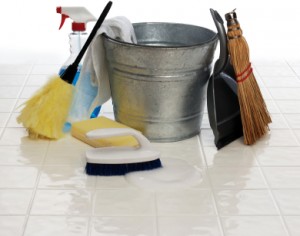Tips and Thoughts on Critical Process Cleaning Procedures
August 28th, 2013 // 1:58 pm @ jmpickett
Latest FDA and cGMP Compliance News
How hard can cleaning be? That is something that people who are not involved in the production of pharmaceutical products may ask, but not people in the industry. The general thought process in the industry is that cleaning and cleaning validation is a practice that is necessary and unpleasant and best to be forgotten once it is done. But with the new process validation guidance that has come out from FDA in recent years, it is more important than ever to verify, control and improve our cleaning process validation procedures.
As we all know, the problems of residuals and cross contamination can have serious consequences; we see many 483s and warning letters issued by FDA for poor cleaning procedures and related cGMP violations.
Many companies have responded to this and are becoming better at adopting essential cleaning validation and critical process cleaning procedures in pharma. We are seeing more protocols that visually ensure that critical process manufacturing does not have residuals, and also to better development, implementing and qualifying of process equipment and cleaning skids. Some firms also are hiring cleaning validation companies to make sure they have an FDA-compliant cleaning program.
But is there no more room for further process improvement here? We still see some problems in cleaning validation and manufacturing operations that are still causing problems and leading to 483s and warning letters.
Consider these three cleaning validation issues:
- Dirty hold transgression: As a part of your cleaning validation process, the period from when the process equipment is not manufacturing to when your cleaning process begins is called the Dirty Hold Time. Is a water soak of equipment cause the validated DHT clock to stop? Where there are delays before the start of the validated cleaning process, will a quick water rinsing change the validated cleaning process in any way? Should all hold cycles be done as part of the development of the cleaning cycle, and should the worst case be validated and clearly documented?
- Clean hold transgression: The period from when the validated cleaning process ends to when your process equipment is being used in the next manufacturing step is known as the Clean Hold time. When your process equipment is being used beyond the validated time period, what are the potential problems and concerns? If equipment is stored so that there are assurances that no other contaminants have been brought in and all microbial issues are controlled, what are the other data or activities that the manufacturer needs to have to use the equipment in a safe manner in the next process? Can use risk be mitigated with more demonstration data? Did the cleaning cycle lose any effectiveness? Or is it an issue of environmental control?
- Management of hold times: When there are small parts, including probes, reagent utensils, and spool pieces, which are lost or the chain of custody is not clear, what should the manufacturer do? Should you consider using disposable parts? Is that expense too much? How many drug manufacturers have a bar coding or color system in place?
We hope that these concerns and questions can help to spur more discussion with those tasked with cleaning and cleaning validation programs. For more information on the essentials of cleaning validation, please review our upcoming webinar on this complex topic, The Essentials of Cleaning Validation.



